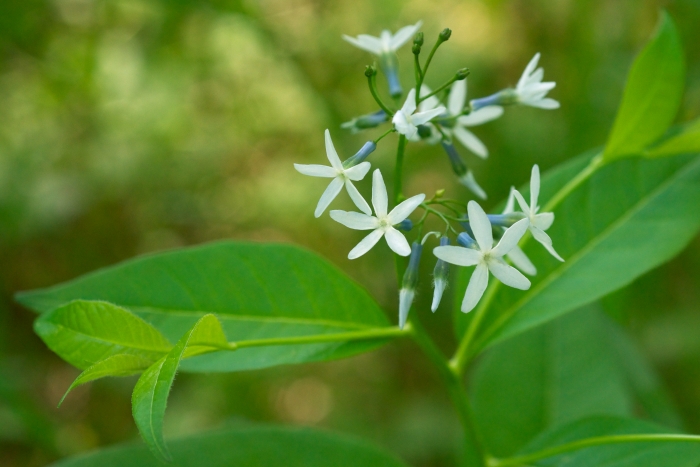Eastern Bluestar
(Amsonia tabernaemontana var. salicifolia)
Eastern Bluestar (Amsonia tabernaemontana var. salicifolia)
/
/

Eric Hunt
CC BY-SA 4.0
Image By:
Eric Hunt
Recorded By:
Copyright:
CC BY-SA 4.0
Copyright Notice:
Photo by: Eric Hunt | License Type: CC BY-SA 4.0 | License URL: https://creativecommons.org/licenses/by-sa/4.0 | Uploader: Eric in SF | Publisher: Wikipedia Commons | Title: Amsonia_tabernaemontana_Arkansas.jpg | Notes: Species from eastern North America Common name: Eastern bluestar Photographed in Boyle Park, Little Rock, Pulaski County, Arkansas | ObjectName: Amsonia tabernaemontana Arkansas | UsageTerms: Creative Commons Attribution-Share Alike 4.0 |














Estimated Native Range
Summary
Amsonia tabernaemontana var. salicifolia, commonly known as Eastern Bluestar, is a perennial herb native to moist meadows, prairies, and open woodlands in central and eastern North America. It forms v-shaped clumps typically 2-3 feet tall and wide. The plant features willow-like leaves and clusters of star-shaped, light blue flowers that bloom in late spring to early summer. The flowers are quite showy and attract pollinators such as bees and butterflies.
Eastern Bluestar is valued for its attractive foliage, which turns a bright yellow in the fall, providing extended seasonal interest. It is often used in border plantings, native plant gardens, and as part of pollinator-friendly landscapes. This species prefers full sun to part shade and thrives in well-drained soil, though it can tolerate periods of drought once established. It is generally low-maintenance and is not prone to serious pest or disease problems. However, it can be susceptible to rust and leaf spots. Amsonia tabernaemontana var. salicifolia is not known for being invasive and does not have aggressive roots, making it a safe choice for a variety of garden settings.CC BY-SA 4.0
Eastern Bluestar is valued for its attractive foliage, which turns a bright yellow in the fall, providing extended seasonal interest. It is often used in border plantings, native plant gardens, and as part of pollinator-friendly landscapes. This species prefers full sun to part shade and thrives in well-drained soil, though it can tolerate periods of drought once established. It is generally low-maintenance and is not prone to serious pest or disease problems. However, it can be susceptible to rust and leaf spots. Amsonia tabernaemontana var. salicifolia is not known for being invasive and does not have aggressive roots, making it a safe choice for a variety of garden settings.CC BY-SA 4.0
Plant Description
- Plant Type: Herb
- Height: 2-3 feet
- Width: 2-3 feet
- Growth Rate: Moderate
- Flower Color: Blue
- Flowering Season: Spring
- Leaf Retention: Deciduous
Growth Requirements
- Sun: Full Sun, Part Shade
- Water: Medium
- Drainage: Medium
Common Uses
Bee Garden, Bird Garden, Border Plant, Butterfly Garden, Deer Resistant, Drought Tolerant, Groundcover, Hummingbird Garden, Low Maintenance, Rabbit Resistant, Street Planting, Water Garden
Natural Habitat
Moist meadows, prairies, and open woodlands
Other Names
Common Names:
Scientific Names: , Amsonia tabernaemontana var. salicifolia, Amsonia salicifolia, Amsonia tabernaemontana var. gattingeri, Ansonia salicifolia,
GBIF Accepted Name: Amsonia tabernaemontana var. salicifolia (Pursh) Woodson